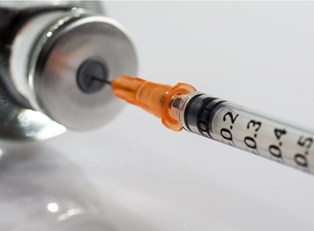The Tdap vaccine is a vaccination combination to prevent tetanus, diphtheria, and pertussis. Although it may seem like an unimportant vaccine, since the prevalence rates of these illnesses are so low in the United States, they are low because the vaccine has been administered to so many. In fact, according to the Center for Disease Control, “reports for cases of tetanus and diphtheria have dropped by about 99% and for pertussis by about 80%.” Here’s a look at what these illnesses are, and when to get the tdap vaccine.
What are Tetanus, Diphtheria, and Pertussis?
Tetanus is a fatal bacterial infection more commonly known as lockjaw. Clostridium tetani, the bacterium behind the illness, lives in dirt and animal stool. When you are wounded by a dirty object, like stepping on a nail sticking out of an old, dirty board, the tetani can get into that wound and then start to take hold of the nervous system by releasing tetanospasmin, a toxin. The toxin then blocks motor neurons, which are in charge of the body's movement. Stiffness or muscle spasms may result, particularly in the neck and jaw, thus the term lockjaw. There is no cure for tetanus once the bacteria release their toxin.
Diphtheria is also a bacterial infection, caused by the bacterium Corynebacterium diphtheriae. Diphtheria can be spread through the air (from an infected person’s sneeze), touching an infected wound, or occasionally by touching items that have infected mucus on them (like used tissues). Although most of the symptoms of this illness seem like a cold or flu (fever, sore throat, congestion, etc.), it is decipherable by the gray film that covers the back of the throat, making breathing difficult. Cutaneous diphtheria infects wounds, and grey ulcers appear on the skin. Despite aggressive treatment, diphtheria can be deadly.
Pertussis, commonly referred to as whooping cough, is also spread by an airborne bacteria. Two weeks of cold-like symptoms begin, until mucus accumulates to such an extent that extreme bouts of coughing that may induce vomiting, exhaustion, or inhalation makes a strange “whoop” sound. In infants, there may be no coughing, only a struggle to breath, making it that much more serious. They may even stop breathing all together. While the bacteria can be dealt with through antibiotics, it can be a serious task to get rid of the cough and those difficulties associated with it.
Who Should Get the Tdap Vaccine?
Most everyone in the United States (as well as other developed countries) receives the Tdap vaccine around age 12. The Td vaccine is for tetanus and diphtheria only, and is boostered every ten years, especially after a serious injury to prevent infection. The CDC encourages women to recieve the Tdap vaccine during every pregnancy, as it can protect the unborn child from developing whooping cough, which is extremely dangerous for infants. Those who work in health or child care should also be sure to get the Tdap vaccine.
Who Shouldn’t Get the Tdap Vaccine?
According to the CDC, anyone who experienced seizures, a coma, or allergic reaction following the initial Tdap vaccination should discuss this with the vaccine administrator before receiving the vaccine, if no other cause was found for these symptoms. Anyone with nervous system issues, seizures, extreme pain following a Tdap vaccine, Guillain Barré Syndrome, or who feel sick the day they are supposed to receive their vaccine should discuss these concerns with a medical professional prior to receiving the shot.



